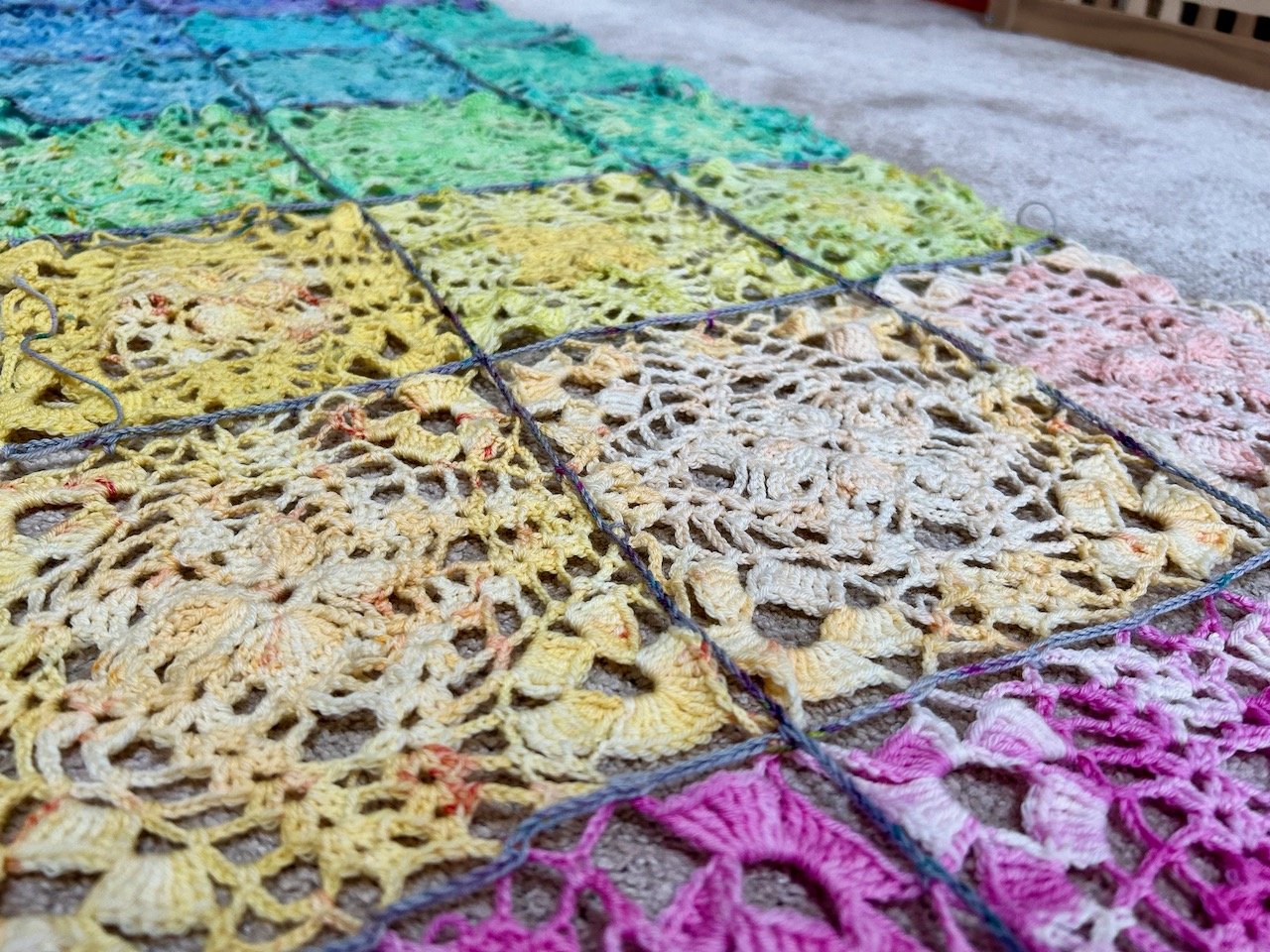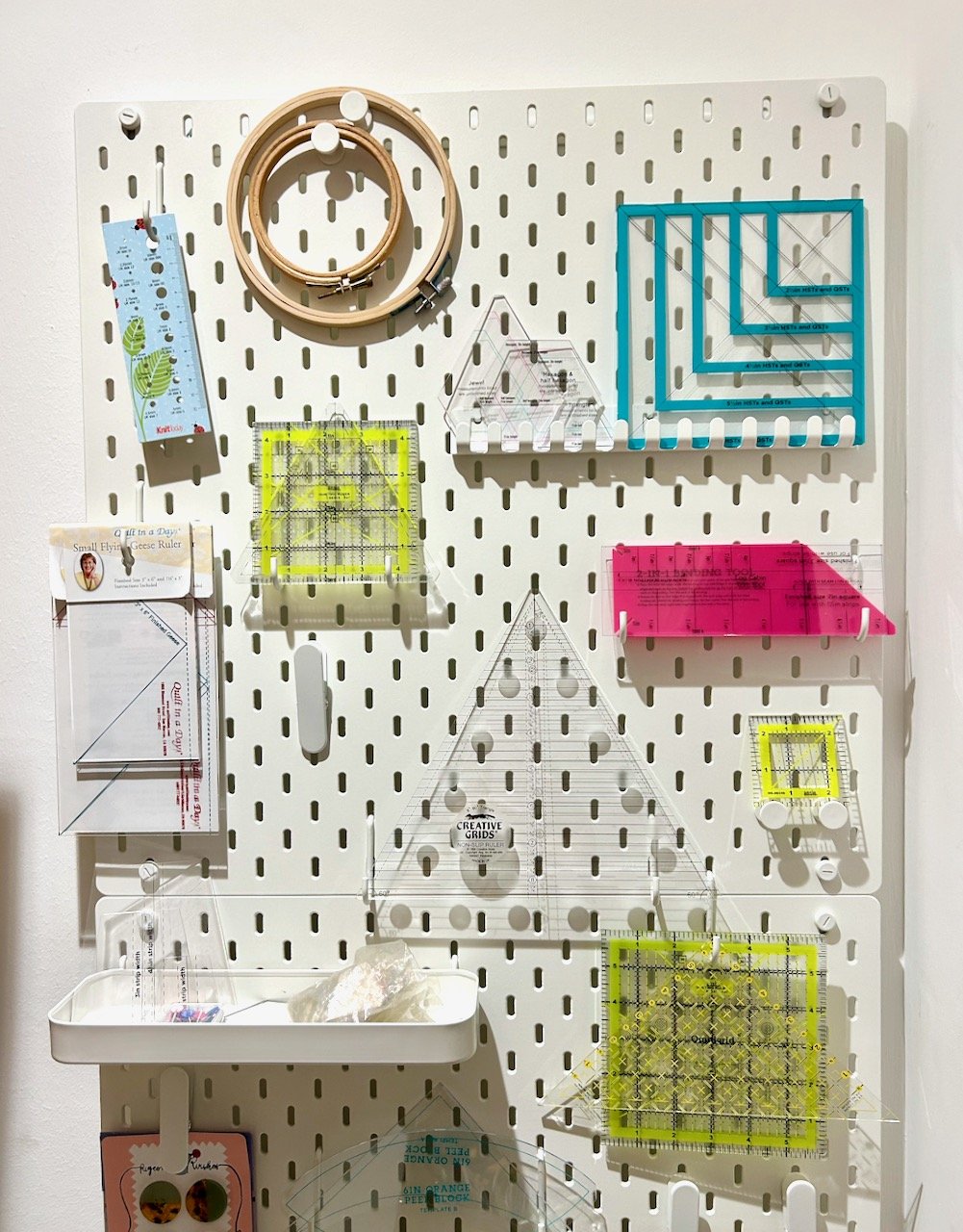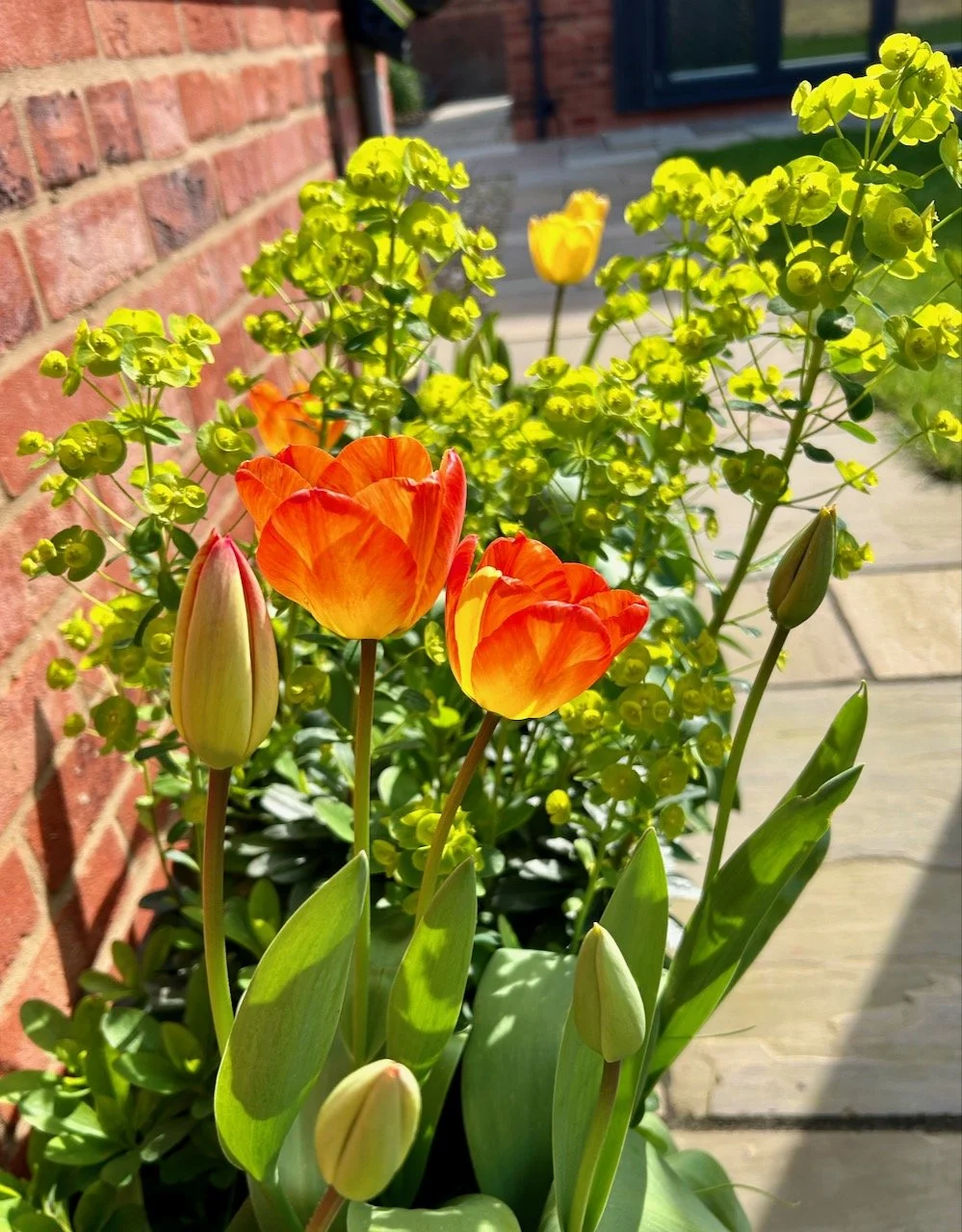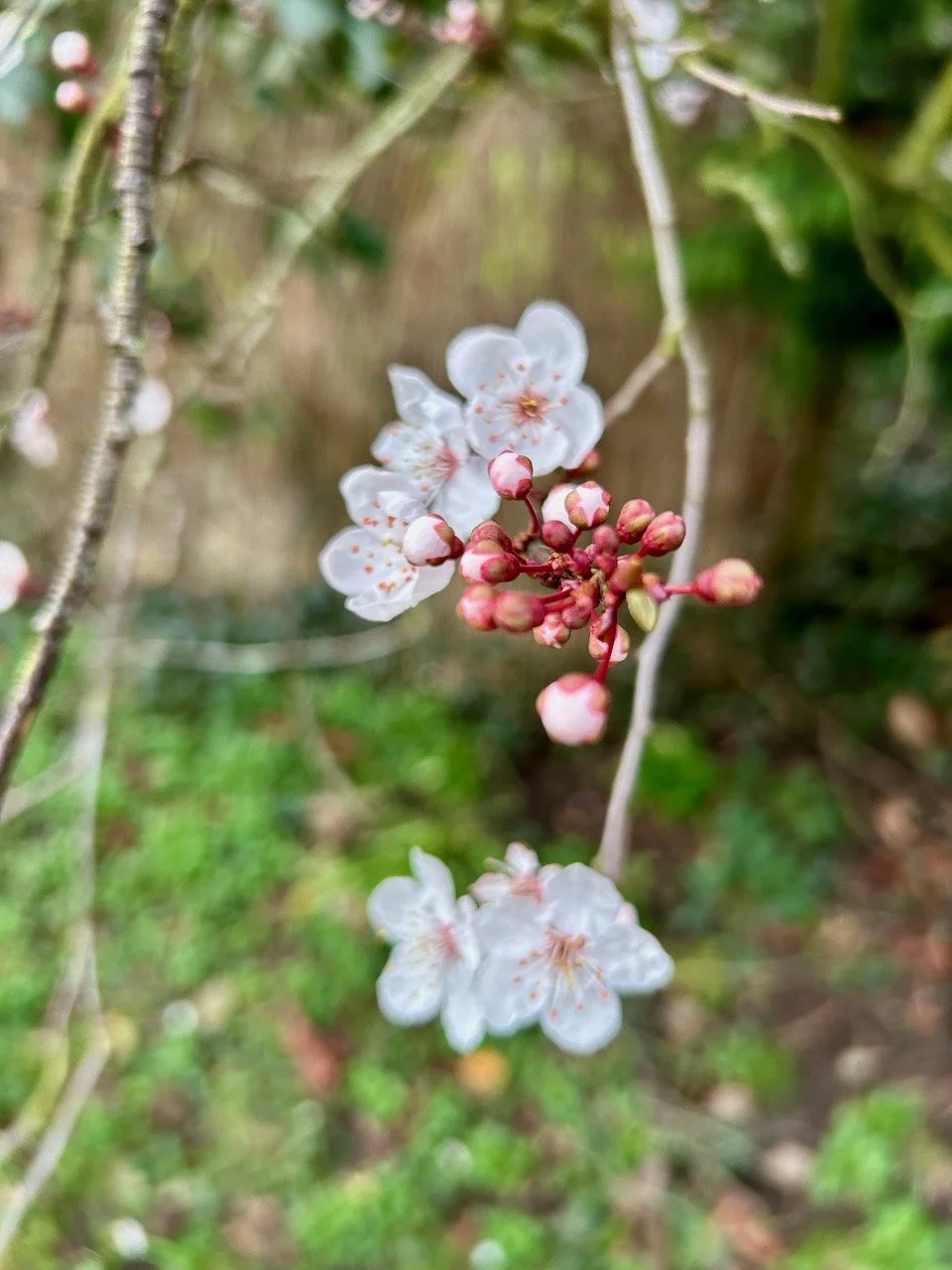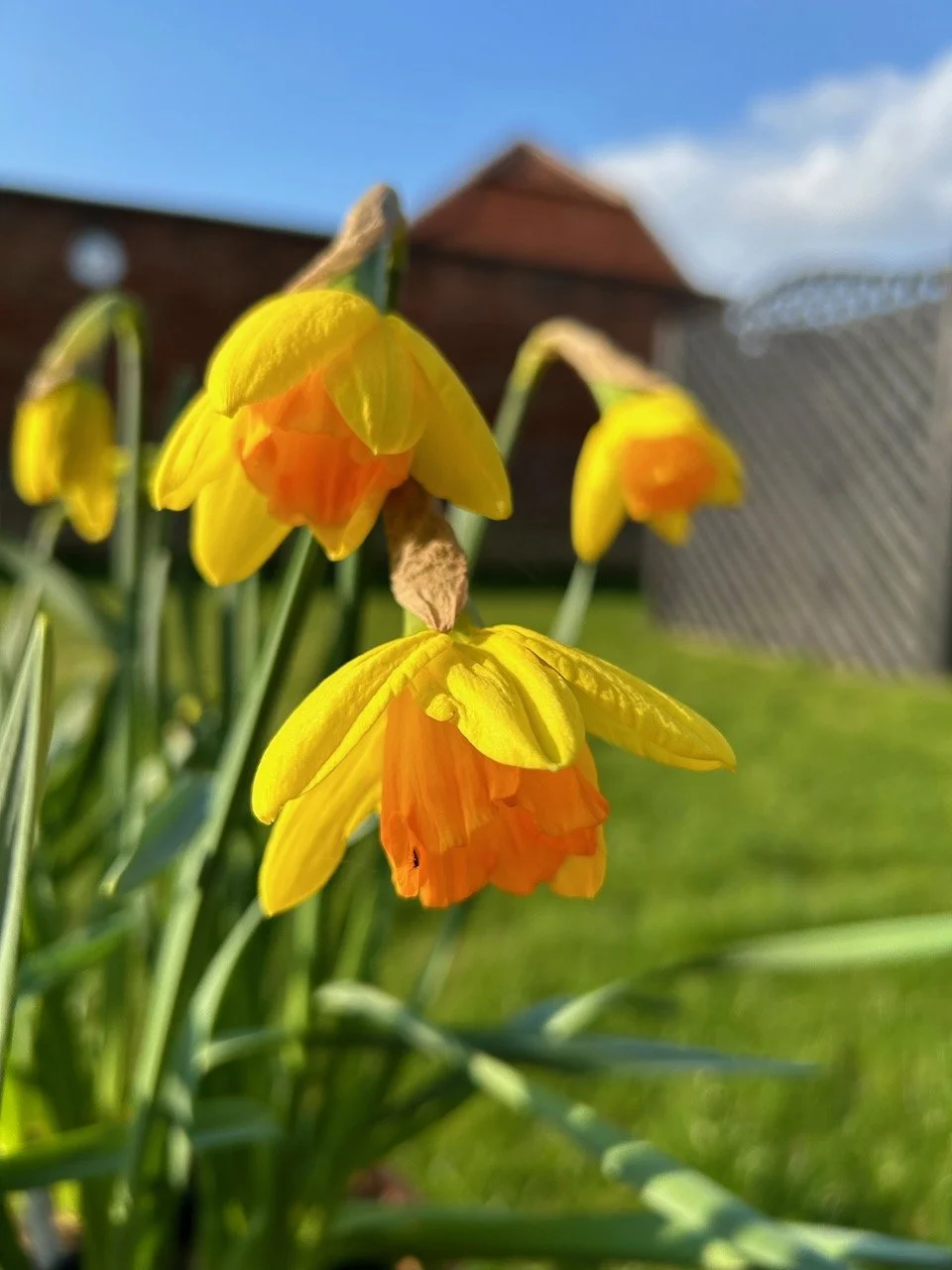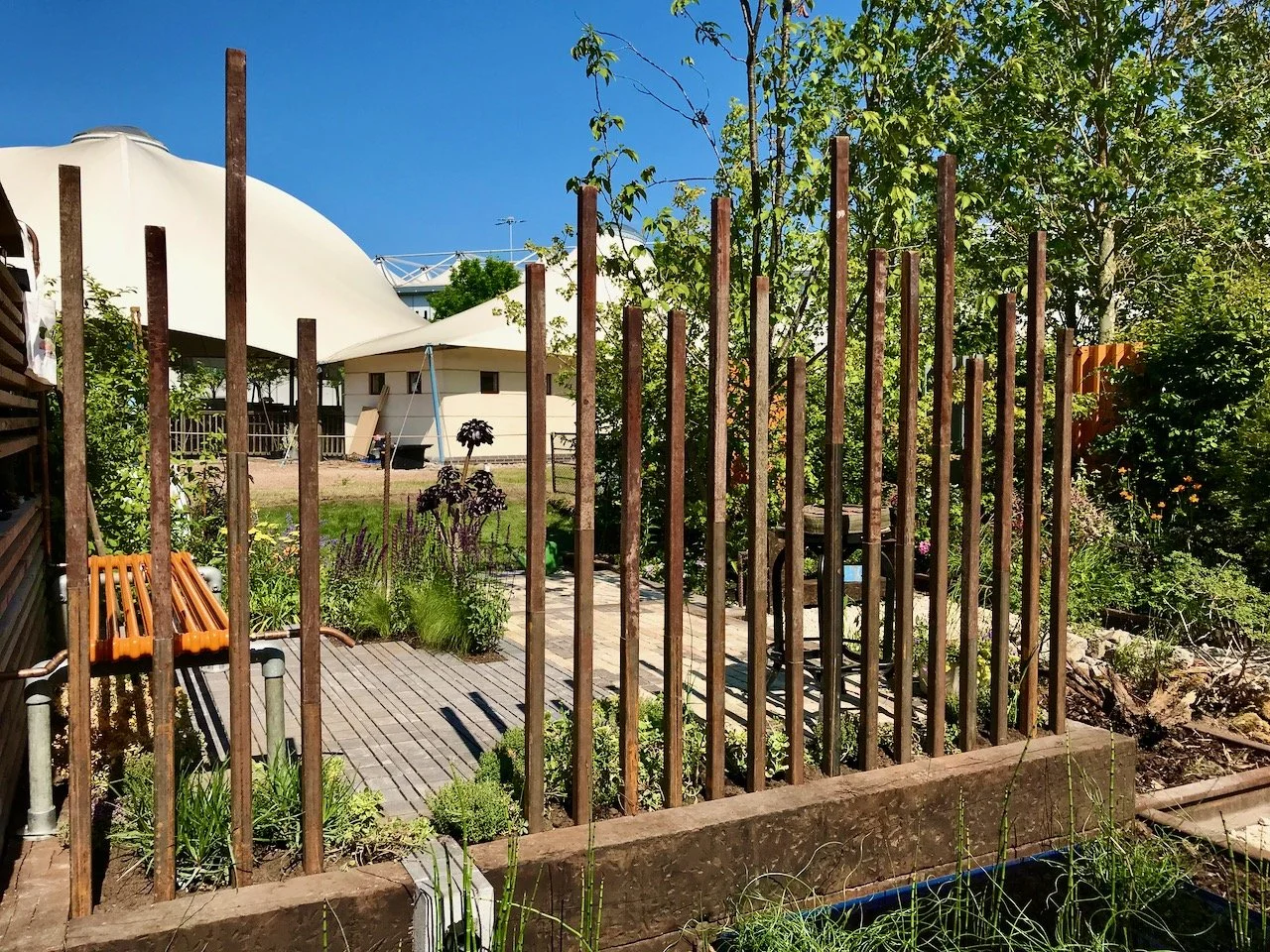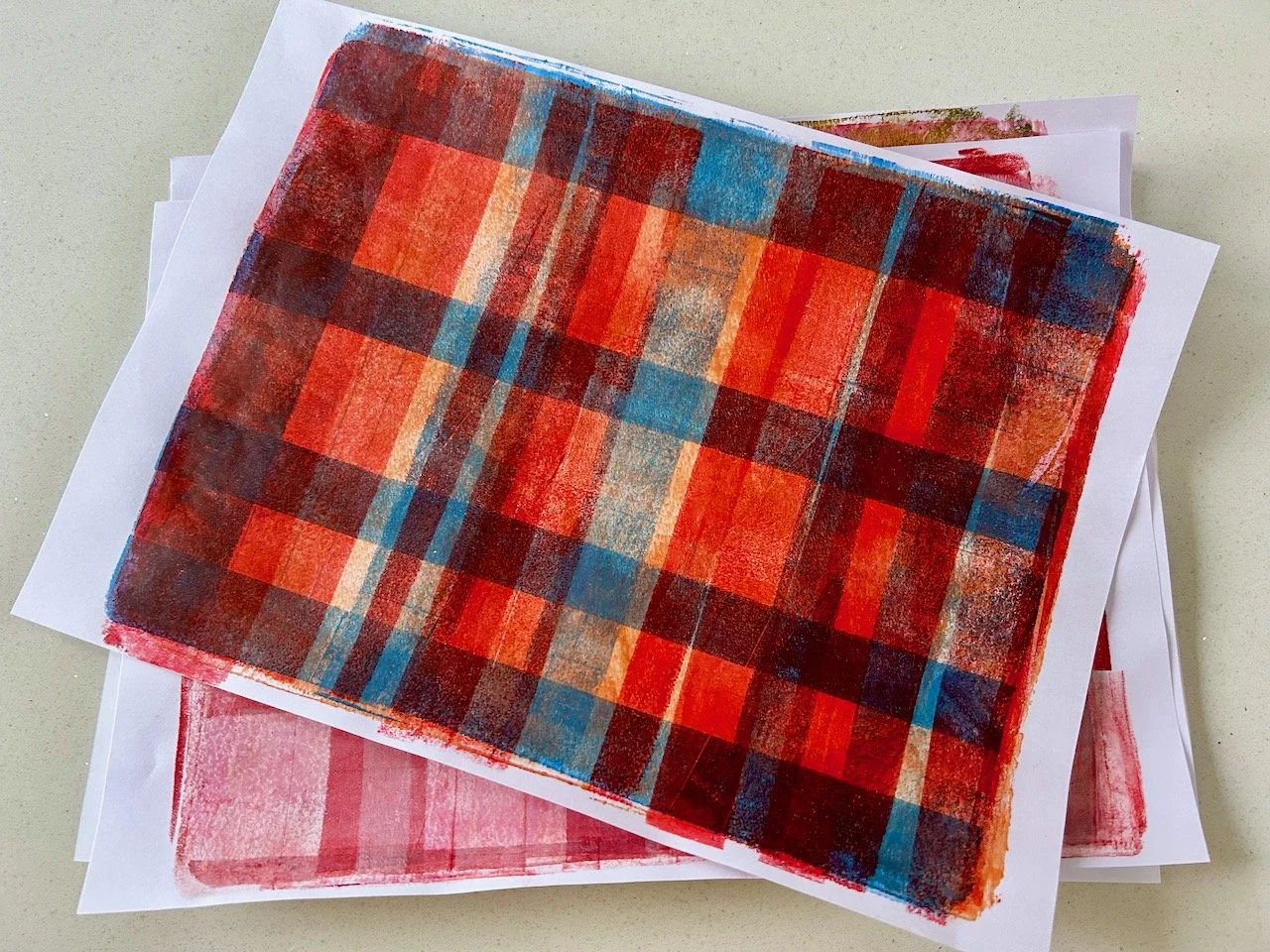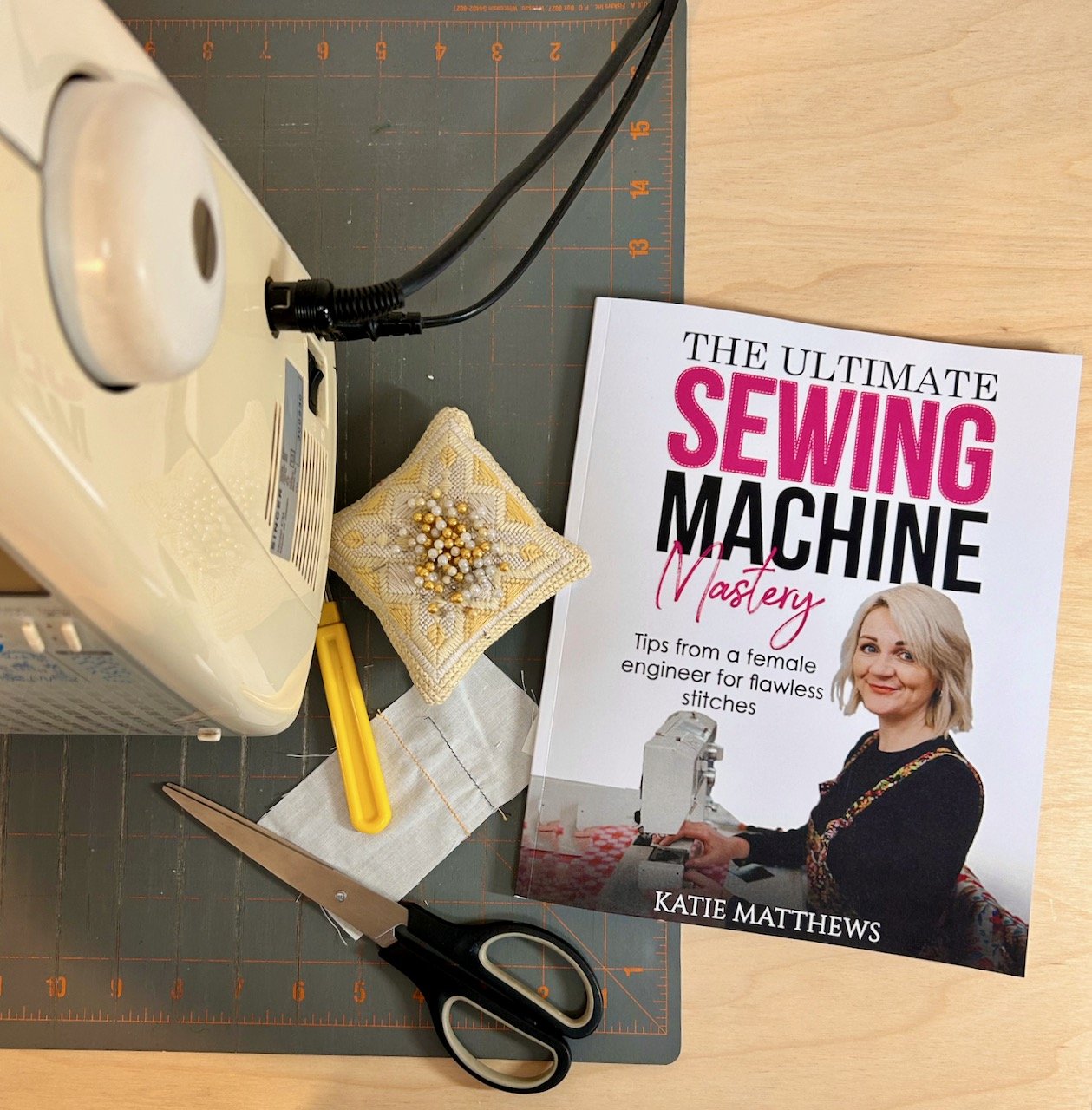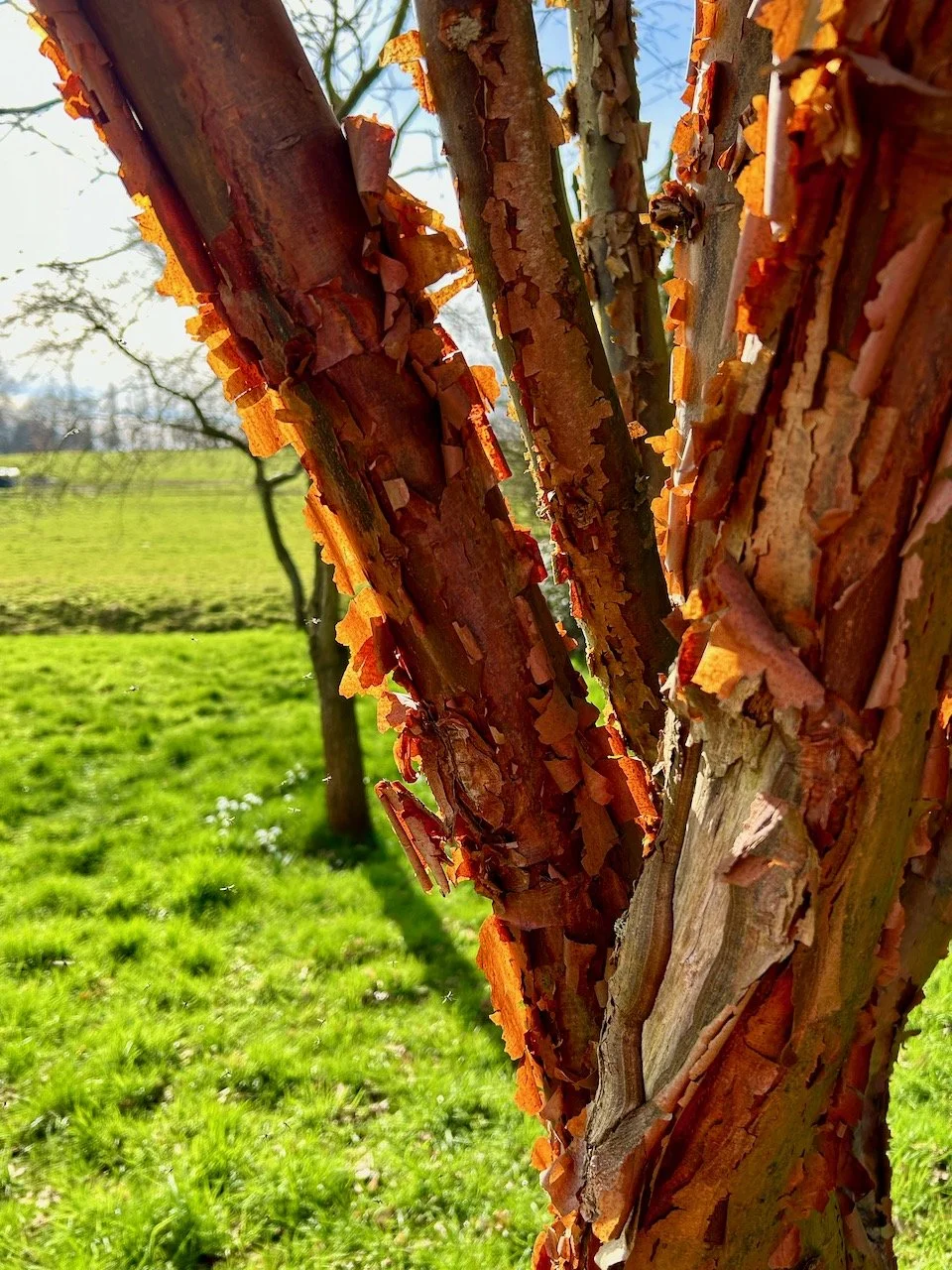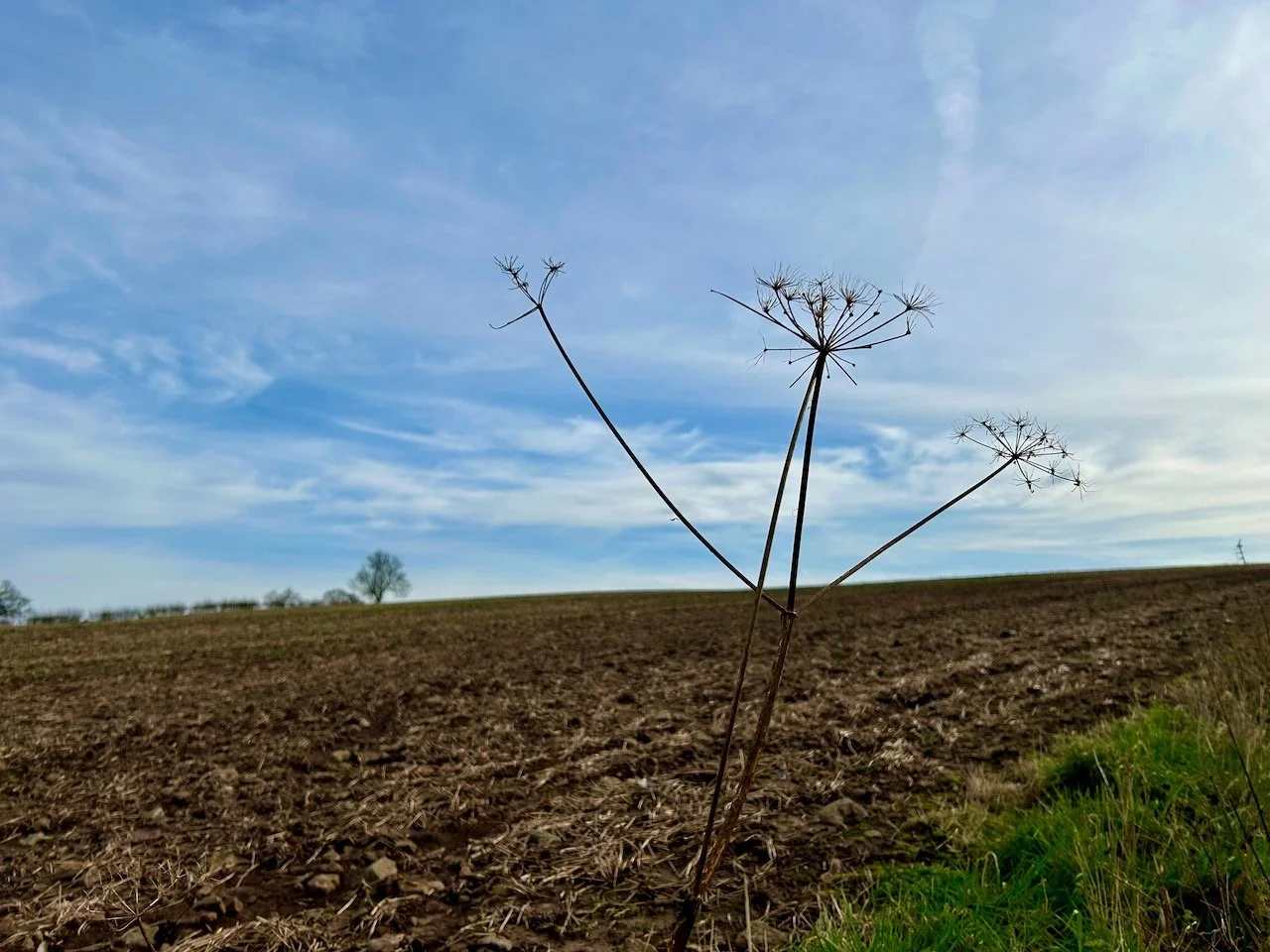Today I'm taking you to another part of the Chateau de Chenonceau estate, and a part you might not have heard of before, the farm. Yes I wasn't expecting to find one here either, and it was a lovely discovery. Especially as it was so pretty. And so French. We approached past the duck pond who, as you'd expect living so close to such a grand chateau also had some rather plush duck accommodation.
The farm is a group of 16th century buildings and includes Catherine de' Medici's stables. One of the buildings houses a floral workshop where two florists work all year round creating the stunning flower arrangements which I've already shared. And it provides easy access to the vegetable and flower gardens nearby. But before we go there, just look at this honeysuckle I spotted. It's huge, and was lovely and fragrant when we visited, but growing in a way - like a cordon - that I'd not seen before.
Moving through one of the farm's arches, I got my first glimpse of the productive part of the garden. And I wasn't surprised at how orderly it was. I loved the grass between the crops - which is a similar approach I have in my allotment, it's just that in my allotment the grass is almost knee high!
The cordoned fruit trees were in fruit too. And I promise when I took the picture below I was still on the right side of the path.
There's twelve square plots each of them edged with apple trees and Queen Elizabeth rosebushes, hence the regal roses reference in the title. And lots of alliteration throughout this post. The whole space covers more than a hectare and like many of the potagers we visited is pretty as well as functional.
Throughout the garden there was added interest, with wicker ornaments and metal wells. The sunflowers were growing tall and strong. And straight. Take a look at how thick their stems are.
And we were there when the peonies were out. They are still a June favourite of mine and were part of my wedding bouquet too. I always wonder at how they stay upright with their heavy blooms, and it seems they don't always. I think if I were a peony I'd be like this too.
Actually if I was a peony I'd be more like these fuschia ones!
What struck me about the roses - apart from the sheer volume of bushes in flower - was the supports they were growing up and against. Most were growing against quite humble wire fencing. But how it transformed it.
In other parts of the garden there were bushes of lilies growing like I've never seen before. But if you've a house the size of Chenonceau to keep in fresh flower arrangements then it makes sense. These also look like they've got their own irrigation system too.
The heritage greenhouses are also hosts to roses, these ones were the palest of peach which complemented the stonework so well.
WHAT A PLACE TO TAKE A REST
Close to the greenhouses I spotted an extra pot similar to those around the wall in Diane de Poitiers garden, although here it was planted with some spare santolini, rather than geraniums. Well, I assume it was spare. I guess using as much as they do in the formal gardens, it's always worth having some spare.
And it's a plant that is going on my plant list. I've been stalking it for a while so next year, is the year. Remind me if I forget!
Before I go, a puzzle. In the squash bed there were several of these wicker baskets on a stick (that's my name for them) and I've no idea what they're for. We've considered all sorts, but each of our suggestions seem just a little too odd, but maybe our ideas aren't quite as far fetched as we think.
If you know why the ten gardeners, who keep the gardens at Chenonceau so well kept, have "planted" these wicker baskets, please leave me a comment and let me know. And if you don't know for sure what they're for, I'd love to hear some of your wacky suggestions too.
Soon we'll be back on the bikes and back on the Loire a Velo cycle path heading towards Tours, which was the last stop - and biggest town - on our trip. I've mixed feelings about Tours. I love a big town, but had been enjoying the smaller countryfied towns and villages. I was pleased to get to Tours as I was keen to visit Villandry, but equally being in Tours and visiting Villandry meant our trip would soon be over, and that was less pleasing. But all that's for another day, until then let me know about those wicker baskets on sticks!




